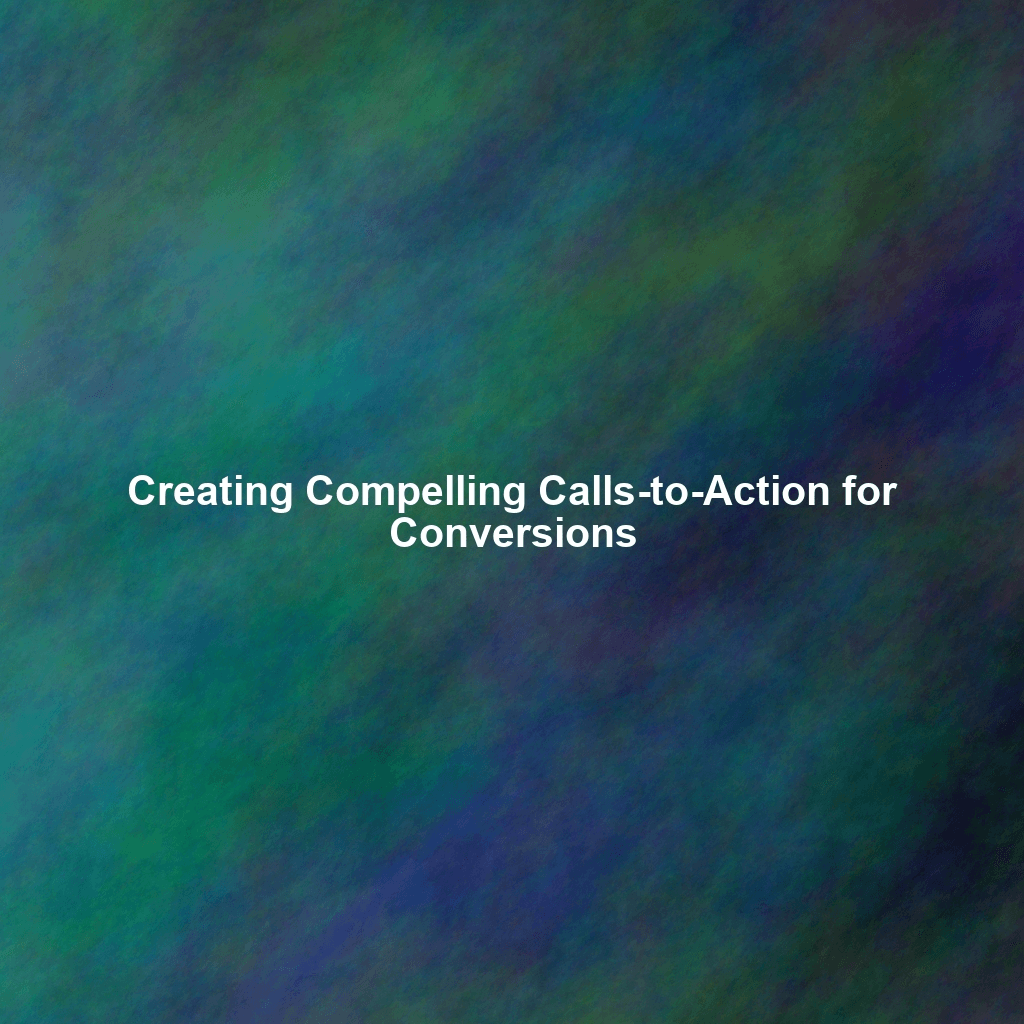Turning Curiosity into Action: Mastering the Art of the Call-to-Action
Content marketing, at its core, is about building relationships and providing value. But even the most engaging blog posts, insightful eBooks, and captivating videos are incomplete without a crucial element: the call-to-action (CTA). A CTA is the bridge between passively consuming content and actively engaging with your brand. It’s the nudge, the invitation, the clear path that guides your audience toward taking the next desired step. Without well-crafted CTAs, your content risks being merely interesting, failing to achieve its ultimate purpose: driving conversions.
This article delves into the art and science of creating compelling calls-to-action that resonate with your audience and transform casual readers into loyal customers. We’ll explore the key elements of effective CTAs, discuss placement strategies, and examine real-world examples to inspire your own campaigns.
Why Calls-to-Action Are Essential in Content Marketing
Imagine a store with beautiful displays and helpful staff but no checkout counter. Frustrating, right? That’s what content without a CTA feels like to your audience. They’ve invested their time and attention, and now they need direction. CTAs serve several critical functions:
- Driving Conversions: This is the primary goal. Whether it’s signing up for a newsletter, requesting a demo, making a purchase, or simply learning more, CTAs guide users toward these desired actions.
- Improving User Experience: Clear and concise CTAs improve the overall user experience by making it easy for visitors to find what they’re looking for and accomplish their goals.
- Measuring Content Effectiveness: Tracking CTA clicks and conversions provides valuable data about the performance of your content and helps you identify areas for improvement.
- Guiding the Customer Journey: CTAs can be strategically placed throughout your content to guide users along the customer journey, from awareness to consideration to decision.
- Boosting Engagement: Interactive CTAs, such as quizzes or polls, can increase engagement and keep users on your website longer.
Anatomy of a Compelling Call-to-Action
Creating effective CTAs is not about simply slapping a button on your page and hoping for the best. It requires careful planning and attention to detail. Here’s a breakdown of the key elements:
1. Compelling Copy: The Power of Words
The words you choose for your CTA are critical. Avoid generic phrases like “Click Here” or “Submit.” Instead, opt for action-oriented language that highlights the benefit of taking the desired action. Consider these examples:
- Instead of: “Learn More”
Try: “Unlock Your Free Guide” or “Discover the Secret to [Desired Outcome]” - Instead of: “Sign Up”
Try: “Start Your Free Trial” or “Join Our Community Today” - Instead of: “Download”
Try: “Get Your Exclusive Checklist” or “Download the Ultimate Resource”
Use strong verbs that inspire action, such as “Get,” “Discover,” “Unlock,” “Transform,” and “Start.” Personalize your CTAs whenever possible by using “you” and “your” to create a more direct connection with the reader.
2. Design and Visual Hierarchy: Making It Stand Out
A well-designed CTA will visually stand out from the surrounding content. Consider the following design principles:
- Color: Choose a color that contrasts with the background but also aligns with your brand. A/B test different colors to see what performs best.
- Shape and Size: Use shapes that draw the eye and make the CTA appear clickable. The size should be appropriate for the screen size and content.
- Whitespace: Surround your CTA with ample whitespace to prevent it from getting lost in the clutter.
- Typography: Use a clear and legible font that is easy to read at a glance.
- Imagery: Consider using images or icons to reinforce the message of your CTA.
Prioritize visual hierarchy by making the CTA the most prominent element on the page. This will ensure that users notice it and are more likely to click.
3. Placement: Where You Put It Matters
The location of your CTA can significantly impact its effectiveness. Experiment with different placements to see what works best for your audience:
- Above the Fold: Place CTAs at the top of the page, where they are immediately visible to visitors.
- Within the Content: Integrate CTAs naturally within the body of your content, especially after providing valuable information.
- At the End of the Content: Place CTAs at the end of the content to capitalize on the user’s engagement.
- Sidebar: Use sidebar CTAs for persistent offers or promotions.
- Pop-ups: Use pop-up CTAs sparingly and strategically to avoid disrupting the user experience. Consider using exit-intent pop-ups to capture users before they leave your website.
Consider the context of the content and the user’s intent when choosing the placement of your CTA. For example, a CTA offering a free trial might be more effective after the user has read a detailed product description.
4. Urgency and Scarcity: The Fear of Missing Out
Creating a sense of urgency or scarcity can motivate users to take action immediately. Consider using phrases like:
- “Limited Time Offer”
- “While Supplies Last”
- “Act Now Before It’s Too Late”
- “Only a Few Spots Remaining”
However, use urgency and scarcity tactics ethically and avoid making false claims. Authenticity is key to building trust with your audience.
5. Value Proposition: What’s in It for Them?
Your CTA should clearly communicate the value proposition of taking the desired action. What will the user gain by clicking the button? Focus on the benefits, not just the features. Consider these examples:
- Instead of: “Download Now”
Try: “Download Your Free Guide to Double Your Productivity” - Instead of: “Request a Demo”
Try: “See How Our Software Can Save You Time and Money”
Highlight the tangible benefits that the user will receive, such as increased efficiency, cost savings, or improved results.
Beyond the Basics: Advanced CTA Strategies
Once you’ve mastered the fundamentals of CTA creation, you can explore more advanced strategies to further optimize your campaigns:
Personalized CTAs
Tailor your CTAs to the individual user based on their demographics, behavior, or past interactions with your brand. For example, you might show a different CTA to a first-time visitor than you would to a returning customer.
Smart CTAs
Use smart CTAs that change based on the user’s position in the sales funnel. For example, a user who has already downloaded an eBook might see a CTA to request a demo.
Two-Step CTAs
Break down the conversion process into two steps. For example, instead of asking users to fill out a long form, you might first ask them to click a button to express their interest, then present the form on the next page.
A/B Testing
Continuously test different versions of your CTAs to see what performs best. Test different copy, colors, placements, and designs. Use A/B testing tools to track your results and make data-driven decisions.
Examples of Effective Calls-to-Action
Let’s look at some real-world examples of compelling CTAs:
- Netflix: “Join Free for a Month” – This CTA clearly communicates the benefit of signing up (a free month) and uses strong action-oriented language.
- HubSpot: “Get Started Free” – This CTA is simple, direct, and highlights the fact that users can start using the software for free.
- Spotify: “Get Spotify Free” – Similar to HubSpot, this CTA emphasizes the free aspect of the service.
- Amazon Prime: “Start Your 30-Day Free Trial” – This CTA leverages the power of a free trial to encourage users to sign up.
- Neil Patel: “Unlock My Marketing Potential” – This CTA is personalized and speaks directly to the user’s desired outcome.
These examples demonstrate the importance of clear, concise, and benefit-driven CTAs.
Measuring and Analyzing Your CTA Performance
Creating compelling CTAs is only half the battle. You also need to track their performance and make adjustments based on the data. Here are some key metrics to monitor:
- Click-Through Rate (CTR): The percentage of people who see your CTA and click on it.
- Conversion Rate: The percentage of people who click on your CTA and complete the desired action.
- Bounce Rate: The percentage of people who leave your website after viewing a page with a CTA.
- Cost Per Acquisition (CPA): The cost of acquiring a new customer through your CTA.
Use analytics tools like Google Analytics to track these metrics and identify areas for improvement. A/B test different versions of your CTAs to see what performs best.
Common CTA Mistakes to Avoid
Even with the best intentions, it’s easy to make mistakes when creating CTAs. Here are some common pitfalls to avoid:
- Generic Copy: Using phrases like “Click Here” or “Submit” that don’t convey any value.
- Poor Design: Creating CTAs that are visually unappealing or difficult to see.
- Inappropriate Placement: Placing CTAs in locations where they are not relevant or easily accessible.
- Too Many CTAs: Overwhelming users with too many options.
- Unclear Value Proposition: Failing to communicate the benefits of taking the desired action.
- Ignoring Mobile Users: Not optimizing CTAs for mobile devices.
By avoiding these common mistakes, you can significantly improve the effectiveness of your CTAs.
Conclusion: The Power of a Well-Placed Invitation
In the world of content marketing, the call-to-action is more than just a button or a link. It’s the culmination of your efforts, the invitation to your audience to deepen their engagement with your brand, and ultimately, the key to driving conversions. By understanding the principles of effective CTA creation, continually testing and optimizing your strategies, and focusing on providing value to your audience, you can transform casual readers into loyal customers and unlock the full potential of your content marketing efforts. So, go forth and create CTAs that not only grab attention but also inspire action, turning curiosity into conversion, one click at a time.
 Skip to content
Skip to content

